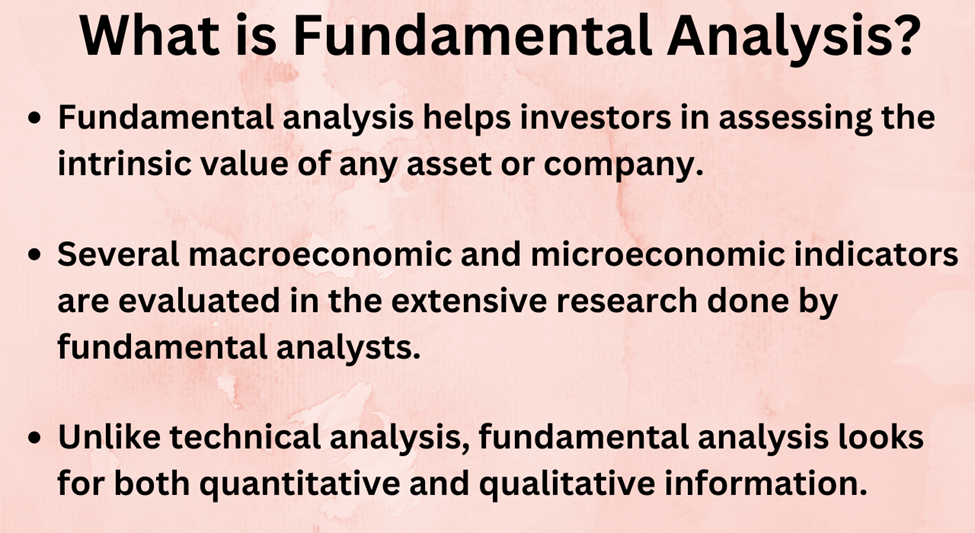Highlights:
- Fundamental analysis is used to determine the intrinsic value of an asset.
- The fundamental analysts look for several market trends and economic health to determine the value.
- Several macroeconomic, as well as microeconomic factors are also evaluated for the fundamental analysis.
Investors typically look into the potential and opportunities in any assets before investing. One of the most important parts of an investment plan is understanding the risks, growth potential, and other related factors of the assets.
Different traders have distinct views, depending on which they make their investments. But one of the primary things every investor follows is the growth potential and the expected returns on their spending.
The fundamental analysis is a great approach to understanding and exploring several key factors about any asset or company, which helps investors to decide whether to open or close a position.
Many have already heard of the term, but let's discuss the fundamental analysis and its importance for investors willing to understand the approach.
What is fundamental analysis?
Fundamental analysis is an approach that helps market participants in assessing the intrinsic value of an asset through a comprehensive view of the market. The intrinsic value can be described as the value of an investment depending on the asset's financial condition, recent market scenario, and economic conditions.
Several factors should be focused on for the fundamental analysts to make a spending decision. Some macroeconomic factors include the overall economic condition, the performance of the asset or company's respective sectors, geopolitical or internal political effects, the competitiveness of the market, etc.
Besides, it is also important to evaluate the company's higher management or executive team for fundamental analysis. Meanwhile, certain microeconomic like demand and supply, labor market, production and transportation costs, etc should also be kept in focus.
Through the fundamental analysis, the analysts could distinguish one company or asset from the other, irrespective of their sectors, market cap, etc. For studying the management team, the fundamental analysts typically look for the executive team members, their backgrounds, prior experience and achievements or failures, etc.
In addition, the company's financial statement, like 10-Q or quarterly reports, 10-K or annual reports, also plays an important role in these analyses. The 8-K filings are also important as the company must file them with the SEC for any reportable events like acquisitions, changes in the executive team, etc.
The fundamental analysts look for the profit/loss statements, cash flow, revenue growth, and other key factors from the company's filings to understand its performance.
All these features make fundamental analysis different from technical analysis, which mainly focuses n quantitative data. On the other hand, fundamental analysts look for quantitative and qualitative information.
 Source: ©Kalkine Media®; © Canva Creative Studio via Canva.com
Source: ©Kalkine Media®; © Canva Creative Studio via Canva.com
Importance of fundamental analysis:
As said earlier, this helps the investors assess the intrinsic value of any firm, or asset, hence giving them the opportunity to understand whether an asset is undervalued or overvalued.
The intrinsic value is the asset's true value, which is generally different from its current market value.
For instance, suppose an asset is trading at US$ 10, and fundamental analysts projected its value true value to be around US$ 14 after research, while another analyst gives a projection of about US$ 16. Many traders would consider both estimates' average and expect it to rise around US$ 15.
This allows investors to place a bet on any asset at a lower price than the intrinsic value, which might result in a profit in the long run. However, the tenure of the long term could be days, months, or sometimes a year, which couldn't be truly predicted.
Bottom line:
Fundamental analysts look at the broader scenario in both the macroeconomic and microeconomic factors for analyzing the future performance or growth potential of any company or asset. In other other words, fundamental analysts look at the financials, consumer behavior, internal and international political factors, and other key factors for their extensive research.





